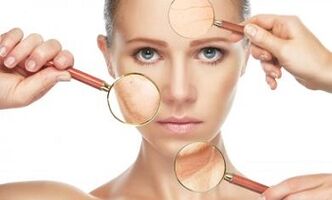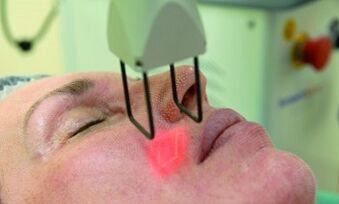
The appearance of skin aging is the appearance of wrinkles, enlarged pores and loss of skin freshness. The aging process is almost non-existent in the early stages, and therefore does not attract much attention, but at the age of 25 the first signs of the initial decline appear: turgor decreases, the texture changes. Later, the skin gradually becomes thinner - vessels appear, and areas of hyperpigmentation appear.
In order to restore the youth of the skin, it is not enough to remove only the visible manifestations of aging - it is necessary to restore the active activity of cells, the natural mechanism of their renewal and growth. Thus, the skin not only gets a new look, but actually rejuvenates. Cosmetology was a real breakthrough in 2004, when a fractional photothermolysis method was proposed to treat age-related changes in the skin. This technology is proven and clinically tested - effective in correcting wrinkles and rejuvenating the skin.
Practical application has also shown that it is resistant to fractional photothermolysis, safe and has a high rate of elimination of cosmetic defects and the return of young people. Today, it is one of the most reliable and promising ways to rejuvenate and strengthen the skin, which is recognized as the "gold standard" in solving cosmetic problems. In addition, it is a modern and safe alternative to surgical skin lifting.
The course of the procedure, the patient's feelings

An integral and attractive advantage of the fractional photothermolysis procedure is that it is painless - only surface anesthesia should be used, and the sensation is limited to a slight tingling in the area treated with laser light.
Anesthesia is applied before the session, which lasts for an hour - the time varies depending on the size of the face to be treated.
Upon completion of the procedure, the specialist will immediately advise the patient, lubricate the skin with cream and give detailed instructions on care.
It should be noted that the skin no longer requires special medical care and can go home on their own.
Recovery period
If the previous surgery required a long recovery period, then the fractional laser rejuvenation method does not take much time: it does not take more than a week to return to a normal rhythm of life: the time depends on the method of intervention (ablative, exceptional). In the first two days after the procedure, the skin may become slightly swollen, redness is observed on days 2-4, and on days 4-7, the dead cells are removed, leaving healthy and beautiful skin for breathing and development.
With fractional photothermolysis, you can see the premature rejuvenation of the skin - immediately after the method of exposure, the skin tightens, in general, after a week, wrinkles are smoothed, the skin is smoothed, the texture of the skin is improved, the facial oval is clear. Several procedures are required to consolidate and maximize the result - they are performed with a difference of about a month.
Fractional laser rejuvenation lasts up to six months after the completion of all procedures, and the effect lasts for several years. In most cases, the result is determined by the patient's lifestyle - adherence to a doctor-prescribed skin rejuvenation program will help to slow down the aging process.
Combination with other methods of rejuvenation
Many patients seeking to enhance the rejuvenating effect want to combine fractional laser rejuvenation with the use of botulinum toxin injections and fillers. In this case, there are no contraindications - special studies have confirmed the safety of fractional laser exposure to collagen and hyaluronic fillers. There are no restrictions for those who want to have a laser rejuvenation procedure and Botox injections on the same day, but to maximize the rejuvenation effect, it is recommended to first complete a fractional laser rejuvenation course. . Apparently, the achieved result does not require additional efforts to restore the beauty and youth of the skin.
Contraindications to the procedure
Fractional laser rejuvenation should not be performed if there are general therapeutic contraindications:
- Benign and malignant tumors in the medical field.
- Oncology, radiation and chemotherapy.
- Dermatoses in the field of procedure, photodermatoses.
- Family history of vitiligo.
- Herpes infection in the last month.
- History of keloid scars.
- Acute infectious diseases or weakened immunity.
- Chronic diseases (diabetes, systemic diseases of the connective tissue, blood clotting disorders, thromboembolic diseases. )
- Newly burned or burnt in the last month.
- Use of oral retinoids in the last 6 months or use of topical dermatologicals with retinoids in the last 2 weeks.
- Pregnancy, lactation.
- Mental illness.
If there is a contraindication to the procedure, you should temporarily adhere to the safety of health, in the same way the fractional laser rejuvenation procedure is completely safe.














































































